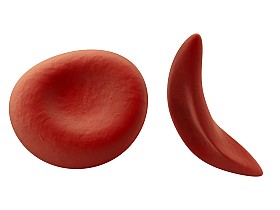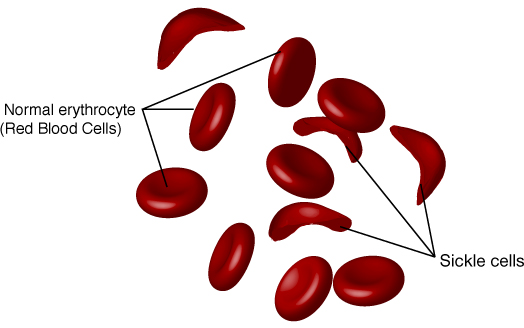

Sickle cell anemia is an inherited disoeder. It is a condition in which there aren't enough healthy red blood cells to carry adequate oxygen throughout your body. Normally, your red blood cells are flexible and round and move easily through your blood vessels. In sickle cell anemia, the red blood cells become rigid and sticky and are shaped like sickles, similar to a crescent moon. These Red Blood Cells tend to get stuck in small blood vessels, which can slow or block blood flow and oxygen to parts of the body.

Anemia
Episodes of pain
Hand-Foot Syndrome
Frequent Infections
Delayed Growth
Vision Problems
